
Orland is a town located in the northwest corner of Steuben County, Indiana in Millgrove Township at the intersection of State Road 120 and State Road 327. The population was 434 at the 2010 census.
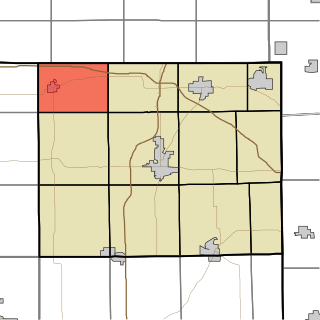
Millgrove Township is one of twelve townships in Steuben County, Indiana, United States. As of the 2010 census, its population was 1,577 and it contained 990 housing units.

Grassyfork Fisheries Farm No. 1, also known as Ozark Fisheries Shireman Farm, is a historic goldfish hatchery and national historic district located in Washington Township, Morgan County, Indiana. The Grassyfork Office and Display Room building was built in 1936, and is a one-story, rectangular, brick building with a hipped roof. It measures 36 feet by 100 feet. The property includes a variety of buildings, structures, and sites associated with the fish hatchery. Among them are a barn, six wells, two dams, remains of formal landscaping and rock garden, and all goldfish ponds, levees, and associated dirt roads.

South Bend Remedy Company Building is a historic building located at South Bend, St. Joseph County, Indiana. It was built in 1895, and is a two-story, transitional Queen Anne / Classical Revival style brick and limestone building. It features a recessed entrance, round turret topped by a conical roof, and a wide frieze band of garlands and torches. It was built to house the offices and laboratory for the South Bend Remedy Company, a mail order patent medicine business. It was moved to 501 W. Colfax Ave. in 1988, and then to 402 W. Washington St. in 2003.

Edward and George Cary Eggleston House is a historic home located at Vevay, Switzerland County, Indiana. It was built in 1837, and is a two-story, rectangular brick dwelling with a 1 1/2-story rear ell. It was the boyhood home of authors and brothers Edward Eggleston (1837–1902) and George Cary Eggleston (1839-1911).

William Potter House, also known as the Potter House, is a historic home located at Lafayette, Tippecanoe County, Indiana. It was built in 1855, and is a two-story, Greek Revival style brick dwelling, with a front gable roof. A rear addition was added about 1880. The entrance features Doric order columns and opposing pilasters.
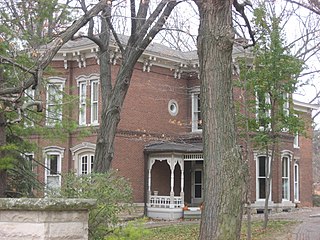
Waldron–Beck House and Carriage House is a historic home and carriage house located at Lafayette, Tippecanoe County, Indiana. The house was built in 1877, and is a two-story, irregularly shaped Italianate style brick dwelling, with a rear service wing. It sits on a stone foundation and has a multi-hipped roof with bracketed cornice. It features a three-sided, two-story projecting bay. The carriage house is a two-story, three bay brick building. It has a hipped roof with cupola and a bracketed cornice.
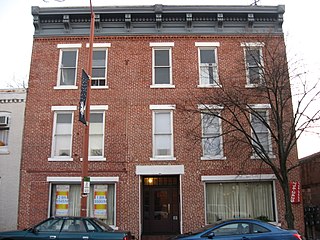
Enterprise Hotel, also known as Gasthaus Alt Heidelberg, is a historic hotel building located at Lafayette, Tippecanoe County, Indiana. It was built in 1895, and is a three-story, five bay, rectangular, Italianate style brick building, with rear additions. It measures 42 feet wide and 32 feet deep. It is historically significant as a European style tavern / inn.

Hershey House, also known as the Patrick Home, is a historic home located in Perry Township, Tippecanoe County, Indiana. It was built in 1856, and is a two-story, Greek Revival style brick dwelling, with a 1 1/2-story rear wing. It is three bays wide and has a gable front roof. Also on the property is a contributing fieldstone milk house. It was the home of William Hershey, son of the builder Joseph M. Hershey, who served with the 16th Independent Battery Indiana Light Artillery in the American Civil War and witnessed the assassination of Abraham Lincoln.

James Pierce Jr. House, also known as Piercestead, is a historic home located in Wabash Township, Tippecanoe County, Indiana. It was built in 1833–1834, and is a two-story, Greek Revival style brick dwelling, with a one-story rear ell and one-story wing. It is four bays wide and has a slate gable roof. It also housed the Cass Post Office between 1846 and 1855.
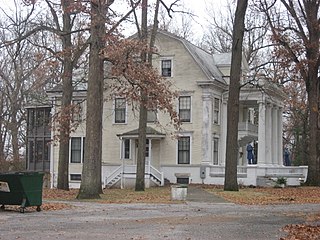
Indiana State Soldiers Home Historic District is a historic Soldiers Home and national historic district located in Tippecanoe Township and Wabash Township, Tippecanoe County, Indiana. The district encompasses four contributing buildings on the campus of the former Soldiers Home. They are the Post Exchange, Commandant's House, Library Building, and the Administration Building. Funding for the home was approved by the Indiana State Legislature in 1888, and building commenced in 1890. Most of the original buildings were demolished in the 1950s. The property continued to be administered by the Indiana Department of Veterans' Affairs as the Indiana Veterans’ Home
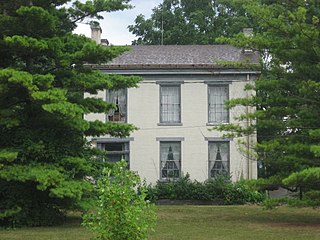
Oliver P. Morton House is a historic home located at Centerville, Wayne County, Indiana. It was built in 1848, and is a two-story, three bay, brick detached row house with Greek Revival style design influences. It has a rear service wing with an attached smokehouse. It was the home of Indiana Governor and U.S. Senator Oliver P. Morton (1823–1877).

Christopher Apple House, also known as the Apple Farm House, is a historic home located in Lawrence Township, Marion County, Indiana. It was built in 1859, and is a two-story, four bay Federal style brick dwelling with Greek Revival style design elements. It has a side gable roof and 1 1/2-story rear wing.

Johnson–Denny House, also known as the Johnson-Manfredi House, is a historic home located at Indianapolis, Marion County, Indiana. It was built in 1862, and is a two-story, five bay, "T"-shaped, frame dwelling with Italianate style design elements. It has a bracketed gable roof and a two-story rear addition. It features a vestibule added in 1920. Also on the property is a contributing 1 1/2-story garage, originally built as a carriage house. It was originally built by Oliver Johnson, noted for the Oliver Johnson's Woods Historic District.
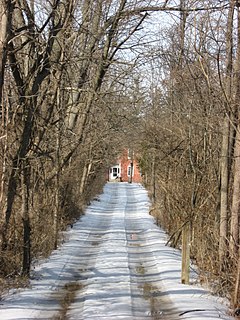
Thomas Askren House is a historic home located at Indianapolis, Marion County, Indiana. It was built between about 1828 and 1833, and is a two-story, Federal style brick I-house. It has a side gable roof and a rear ell. Also on the property is a contributing outbuilding.

Louis Levey Mansion, also known as the Pilgrim Life Insurance Company Building, is a historic home located at Indianapolis, Indiana. It was built in 1905, and is a two-story, Italian Renaissance style limestone dwelling consisting of a three bay by four bay main block with a one bay by two bay rear block. It has a semicircular bay on the rear facade. The front facade features a round arched entrance flanked by pilasters and the roof is ringed by a balustrade. The house was converted for commercial uses in the 1950s.
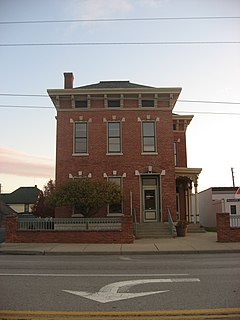
August Sommer House is a historic home located at Indianapolis, Indiana. It was built in 1880, and is a two-story, three bay, Italianate style brick dwelling with rear addition. It sits on an ashlar limestone foundation and has segmental arched windows and a low hipped roof. It features a full-with front porch with cut-work detail. It has been converted to commercial uses.

John Greenleaf Whittier School, No. 33 is a historic school building located at Indianapolis, Indiana. The original section was built in 1890, and is a two-story, rectangular, Romanesque Revival style brick building with limestone trim. It has a limestone foundation and a decked hip roof with Queen Anne style dormers. A rear addition was constructed in 1902, and a gymnasium and auditorium addition in 1927.

McCormick Cabin Site is a historic site located at Indianapolis, Indiana. It is the site of the cabin John Wesley McCormick (1754–1837) built in 1820. It was at the cabin that commissioners appointed by the Indiana legislature met in June 1820 to select the site for the permanent seat of state government at Indianapolis. The site is commemorated by a granite boulder in White River State Park with plaque erected in 1924.

The Guttenberg National Fish Hatchery and Aquarium Historic District is a nationally recognized historic district located in Guttenberg, Iowa, United States. It was listed on the National Register of Historic Places in 1991. At the time of its nomination the district consisted of four resources, all of which are contributing buildings. This district also contributes to the Front Street Historic District. The U.S. Fish and Wildlife Service had a long history of involvement with wildlife conservation in Iowa, especially fisheries. They established fish rescue program along the Mississippi River in 1903 and a research station at Fairport in 1910. The development of the lock and dam system in the 1930s brought the fish rescue operations to an end because they eliminated of the backwaters that trapped them. The fish hatchery was developed at that time.
























